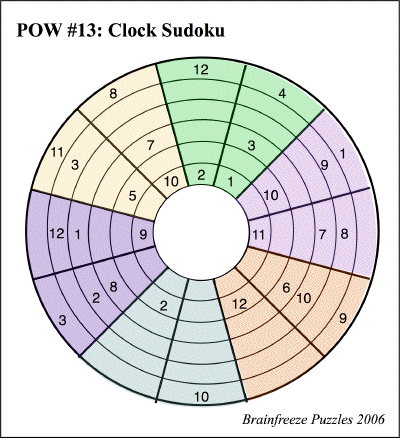
Rules: Fill in with the integers 1, 2, 3, 4, 5, 6, 7, 8, 9, 10, 11, and 12 so that: each of the six rings has no repeated entries; each same-colored adjacent pair of "wedges" has no repeated entries; and each antipodal pair of wedges has no repeated entries. (An "antipodal" pair of wedges is a set of two wedges that are opposite or "across" from each other on the circle.)

As always, we can ask how many such puzzles exist. But we can also ask how many types of circular-style Sudoku puzzles are possible. What kinds of partial regions are natural to consider? Which sets of rules allow valid circle-Sudoku boards and which do not? And in each case, what is the minimum number of clues that are needed to guarantee a unique solution?
Solutions are due by noon on Tuesday, April 18, 2006.
Return solutions ON PAPER to Laura Taalman, Burruss 127, MSC 7803.
Include your name and email address with your solution.